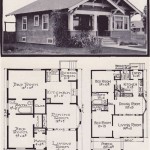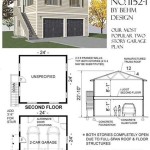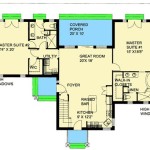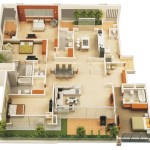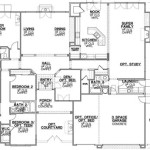How To Draw A Floorplan
Floor plans are a crucial aspect of any construction or renovation project. They provide a detailed representation of a building's layout, allowing for efficient planning and communication among architects, contractors, and homeowners. Drawing a floor plan can seem daunting at first, but with a few simple steps and some practice, you can create accurate and informative floor plans for your projects.
Step 1: Determine the Scale
The scale of your floor plan refers to the ratio between the dimensions on the drawing and the actual dimensions of the space. Determine the appropriate scale for your project, considering factors such as the size of the building and the level of detail required. Common scales include 1:50, 1:100, and 1:200.
Step 2: Measure the Space
Carefully measure the space you want to represent in your floor plan. Use a tape measure to accurately determine the lengths and widths of walls, doors, windows, and other architectural features. Record these measurements clearly on a separate sheet of paper or in a digital format.
Step 3: Create a Base Plan
On a clean sheet of graph paper or drawing paper, start by sketching a simple outline of the building's shape. Use the measurements you have taken to ensure that the proportions and dimensions are accurate. This base plan will serve as the foundation for your detailed floor plan.
Step 4: Add Walls and Partitions
Draw the walls and partitions within the building, using the appropriate line weights and symbols. Indicate the thickness of the walls, and include openings for doors and windows. Pay attention to the placement of architectural features such as fireplaces, stairs, and closets.
Step 5: Add Doors and Windows
Draw the doors and windows using specific symbols that clearly indicate their type and swing direction. Indicate the dimensions of the doors and windows, and label them for easy reference. Use different line weights and hatching patterns to distinguish between walls, doors, and windows.
Step 6: Include Fixtures and Furnishings
Depending on the purpose of your floor plan, you may choose to include fixtures and furnishings. Draw the locations of furniture, appliances, and equipment within the rooms. Use appropriate symbols and scales to ensure clarity and accuracy.
Step 7: Annotate and Dimension
Label all the rooms and spaces in your floor plan, and provide clear dimensions for walls, doors, and windows. Include notes or annotations to indicate specific requirements, such as electrical outlets, plumbing fixtures, or structural details. This information will help others understand the layout and design intent of your floor plan.
Tips for Accuracy and Clarity
Use sharp pencils and clean drafting tools to ensure precision in your drawings.
Refer to your measurements constantly to maintain accuracy and prevent errors.
Use consistent line weights and symbols to enhance the readability of your floor plan.
Step back from your work periodically to assess the clarity and completeness of your drawing.
Practice drawing different types of floor plans to improve your skills and develop a consistent style.
With persistence and attention to detail, you can create informative and accurate floor plans that will effectively communicate your design ideas and facilitate successful building projects.

How To Draw A Floor Plan The Simple 7 Step Guide For 2024

Floor Plan Creator And Designer Free Easy App

How To Draw A Floor Plan Live Home 3d

Draw Floor Plans In Half The Time Cedreo

Draw Floor Plans With The Roomsketcher App

How To Draw A Floor Plan Dummies

How To Draw A Floor Plan The Simple 7 Step Guide For 2024

Draw Floor Plans Create Professional

A Super Simple Method For How To Draw Floor Plan Hampton Redesign

How To Draw A Floor Plan By Hand Step Guide


